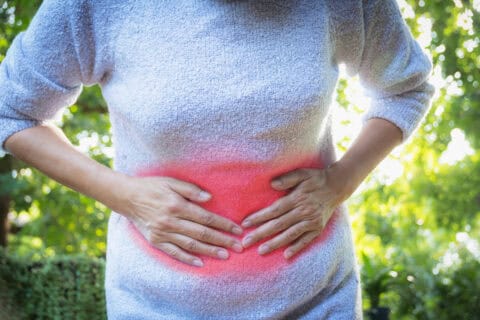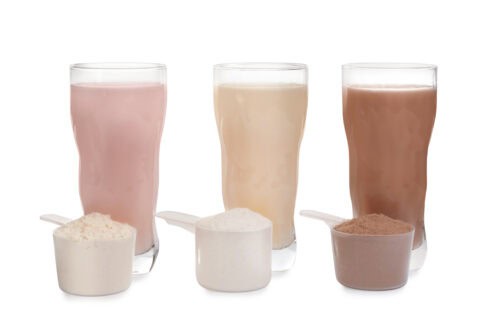Are you struggling with digestive issues that don’t seem to respond to conventional treatments? The elemental diet might be worth discussing with your healthcare provider. This specialized approach has helped many people find relief from various gastrointestinal conditions. Let’s explore what it is and how it might help.
Introduction
The elemental diet is a specialized liquid nutrition plan that provides complete nutrition in an easily digestible form. Unlike regular food or even other medical liquid diets, the elemental diet contains nutrients that are already broken down to their most basic form – hence the name “elemental.”
This medical intervention is typically recommended for specific health conditions rather than as a general dietary approach or weight loss solution.
What Exactly is an Elemental Diet?
The elemental diet is a hypoallergenic, sometimes protein-free, artificial diet designed to supply all necessary nutrients in their simplest forms. This “predigested” nature is what makes it unique and beneficial for certain conditions.
Core Components:
- Amino acids – These are the building blocks of protein, provided in their free form rather than as complete proteins that need digestion
- Simple carbohydrates – Usually in the form of glucose, maltodextrin, or other easily absorbed sugars
- Medium-chain triglycerides (MCTs) – These fats require minimal digestion compared to long-chain fatty acids
- Essential vitamins and minerals – Providing all necessary micronutrients in readily available forms
How It’s Used:
- Comes as a powdered formula that’s mixed with water
- Can replace some meals or all solid food intake depending on the treatment plan
- In severe cases, may be administered through feeding tubes
- Available in commercial formulations or sometimes custom-prepared by healthcare providers
How Does an Elemental Diet Work?
The elemental diet works through several mechanisms that make it effective for certain conditions:
Key Mechanisms:
- Gives the digestive system a rest – Since nutrients are already broken down, minimal digestive work is required
- Reduces antigenic load – The simple components are less likely to trigger allergic reactions or inflammation
- Produces minimal waste – Results in very little fecal matter, reducing bowel movements
- Alters gut microbiota – Can change the intestinal bacterial environment, potentially starving harmful bacterial overgrowth
- Provides healing nutrients – Some components may directly support repair of the gut lining
Who Might Benefit from an Elemental Diet?
The elemental diet is primarily used for people with specific medical conditions:
Gastrointestinal Conditions:
- Inflammatory Bowel Disease (IBD)
- Crohn’s disease
- Ulcerative colitis
- Small Intestinal Bacterial Overgrowth (SIBO)
- Eosinophilic Esophagitis (EoE)
- Irritable Bowel Syndrome (IBS) in some cases
- Refractory Celiac Disease that doesn’t respond to gluten-free diet alone
Other Conditions:
- Oral lesions associated with chemotherapy or radiation
- Chronic pancreatitis
- Eczema (in certain cases)
- Food allergies and sensitivities
- Intestinal Methanogen Overgrowth (IMO)
Important note: The elemental diet is not intended for weight loss in otherwise healthy individuals.
Potential Benefits
When used appropriately under medical supervision, the elemental diet offers several potential benefits:
- Induces remission in conditions like IBD and EoE
- Provides a “gut reset” that can break cycles of inflammation
- Reduces inflammation both in the digestive tract and potentially throughout the body
- Delivers complete nutrition despite digestive limitations
- Ensures nutrient absorption even in people with malabsorption issues
- Helps identify food triggers during the reintroduction phase
Challenges and Drawbacks
Despite its benefits, the elemental diet comes with several challenges:
Common Difficulties:
- Taste issues – Many formulations have an unpleasant taste that can be difficult to tolerate
- Compliance challenges – Following a liquid-only diet requires significant dedication
- Financial considerations – Elemental formulas can be expensive and may not be covered by insurance
- Social limitations – Liquid diets can impact social eating situations and daily routines
- Possible side effects:
- Hunger
- Fatigue
- Headaches
- Mood changes
- Digestive adjustment issues like bloating
- Potential for fungal overgrowth in some cases
Long-term Concerns:
- Nutritional balance – Extended use requires careful monitoring
- Blood sugar impacts – High carbohydrate content may affect blood glucose levels
- Oral health – Lack of chewing can affect dental and oral health
- Muscle maintenance – May be more difficult to maintain muscle mass
How is an Elemental Diet Used?
Implementation of the elemental diet should always occur under healthcare supervision:
Implementation Steps:
- Medical consultation – Always work with a doctor or registered dietitian
- Duration planning – Treatment periods range from a few days to several weeks
- Formula selection – Your healthcare provider will recommend appropriate options
- Gradual introduction – Sometimes the diet is phased in over several days
- Proper consumption – Typically consumed slowly throughout the day
- Food reintroduction – After the elemental phase, foods are systematically reintroduced to identify triggers
Conclusion
The elemental diet is a specialized medical nutrition therapy that provides nutrients in their simplest forms to minimize digestive work and reduce potential triggers. While it offers significant benefits for specific conditions, it should only be used under professional guidance.
For those suffering from conditions like Crohn’s disease, SIBO, or other digestive disorders that haven’t responded to conventional treatments, the elemental diet may be worth discussing with your healthcare provider as a potential option.
Remember that this approach is a medical intervention rather than a general health or weight loss solution. The challenges of following an elemental diet are significant, but for some patients, the potential benefits make these difficulties worthwhile.
Note: This article is for informational purposes only and does not constitute medical advice. Always consult with qualified healthcare professionals before making changes to your diet or treatment plan.






